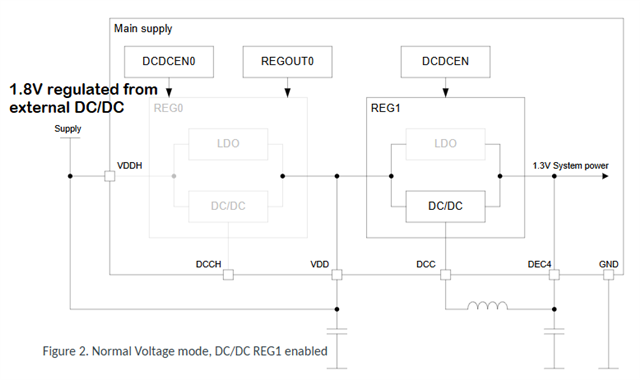Hi,
I'm developing a new battery powered sensor device with an NRF52840 and have some thoughts about efficient power supply. The main question is: Using an external DC/DC converter to power the NRF52 or power it directly from the battery. If the NRF52 only would have the LDO internally the question would be simple, but with the internal DC/DC and some function which you'll loose if you use an external DC/DC, it's a bit tricky.
For the battery I'm using a 3.6 V Lithium-Thionyl Chloride
Scenacio 1: Using an external DC/DC with fixed 1.8V output: Texas Instruments TPS62840
Here I convert the voltage from the battery to 1.8V and power the NRF52 on VDDH and VDD. (I'll still use the internal DC/DC on the second stage).
- Advantage: Regualted voltage and the power efficiency (according to the power profiler I'll save some µA)
- Advantage: External sensors are also powered with 1.8V
- Disadvantage: I cannot use the power fail comparator

Scenacio 2: Powering VDDH and VDD directly from the battery
- Advantage: I can use the power fail comparator
- Advantage: Less components and less money in manufactoring
- Disadvantage: Not so power efficient and no regulated output power
- Disadvantage: External Sensors are powered by the battery directly and need a little bit more power
At both scenarios I'll use several 100µF ceramic capacitors after the battery to prevent voltage drops on high current spikes. I had some problems with voltage drops in the past, so I really want to prevent them this time.
So my overall question is:
- Is it worth using an external DC/DC converter?
- Are there some disadvantages which I'll not considering at the moment.
- Does the external DC/DC help me with the voltage drops (or is the solution here just more capacitors)
Thanks for all your input and Best Regards,
Phobios
